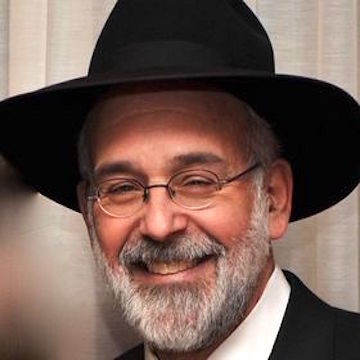Rabbi David Etengoff
336 results total, viewing 291 - 300
|
The first of our two parshiot (Matot and Masei) contains a rather quizzical pasuk: “Eleazar the kohen said to the soldiers returning from battle, ‘This is the statute that the L-rd …
more
By Rabbi David Etengoff
|
8/4/16
|
|
According to the first passage on our parasha, Hashem gave all the nations of the world the same opportunities and potential for leadership. This is based upon the notion that G-d’s actions …
more
By Rabbi David Etengoff
|
7/20/16
|
|
The end of our parasha contains a very difficult narrative in which Miriam and Aaron speak against their beloved brother, Moses:
Miriam and Aaron spoke against Moses regarding the Cushite woman he …
more
By Rabbi David Etengoff
|
6/22/16
|
|
One of the best-known passages in our parsha, and the entire Torah, is that of Birkat Kohanim:
“The L-rd spoke to Moses saying: Speak to Aaron and his sons, saying: This is how you shall …
more
By Rabbi David Etengoff
|
6/16/16
|
|
Parashat Bechukotai presents shalom as one of the greatest rewards that we will receive when we live lives dedicated to Hashem’s holy Torah:
“And I will grant peace in the Land, and …
more
By Rabbi David Etengoff
|
6/1/16
|
|
Sefer Vayikra is the sole book in the Tanach in which the phrase “v’yarata m’elokecha” (“and you shall fear your G-d”) is found. It appears three times in Parashat …
more
By Rabbi David Etengoff
|
5/25/16
|
|
One of the most unusual textual juxtapositions in parasha Emor occurs at the onset of the Torah’s discussion of the mo’adim (festivals) (Vayikra, chapter 23): “And the L-rd spoke to …
more
By Rabbi David Etengoff
|
5/18/16
|
|
Rabbi Chiya, in Midrash Vayikra Rabbah 24:5, teaches us that our parasha was taught to the entire nation (b’hakhal) “since the majority of the Torah’s fundamental principles may be …
more
By Rabbi David Etengoff
|
5/10/16
|
|
The prohibition of imbibing blood is one of the well-known mitzvot found in our parasha (Vayikra 17:10-11). In it we find the unusual expression, v’natati panai, which is explained by both …
more
By Rabbi David Etengoff
|
5/4/16
|
|
The Haggadah is a multi-layered historical document that is the product of numerous Jewish cultures, in both Israel and the Diaspora. As a result, it may legitimately be viewed as one of the …
more
By Rabbi David Etengoff
|
4/21/16
|

 49.0°,
Fair
49.0°,
Fair 